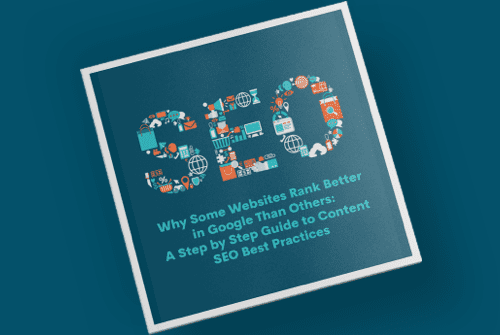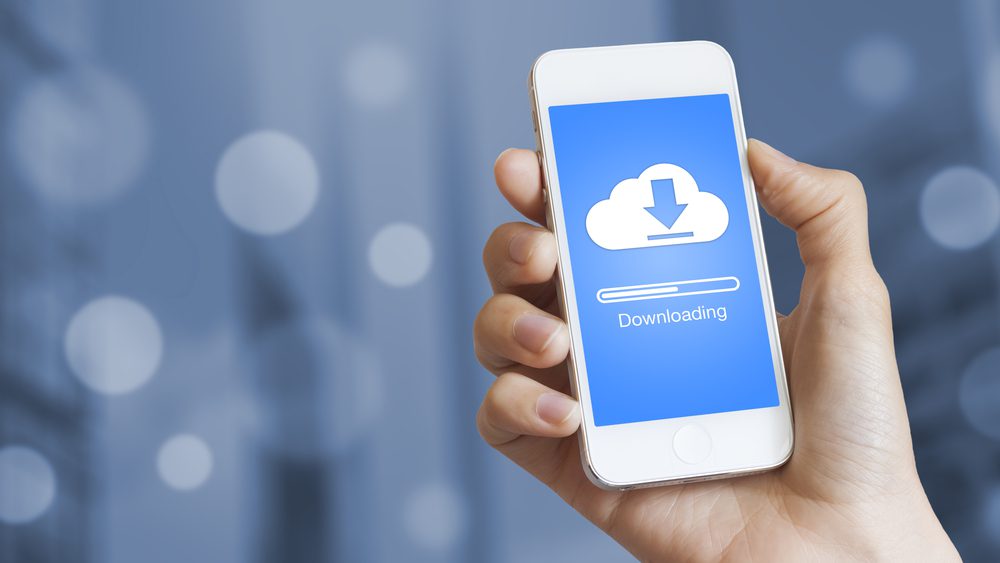


Demand generation is the process of creating interest, awareness, and purchase intent among your target audience for your product, service, or solution. This may involve identifying existing demand and positioning your offer as the best solution, or creating demand by connecting consumers and businesses with a solution that solves a problem they barely realized they had.
Demand is a cornerstone of economics. In order to generate revenue, your target audience must recognize your offerings as something of value. Value is a function of the law of supply and demand. In short, the higher the demand for your offering, the more value it has. The more value it has, the more you can charge for your products or services. Therefore, the more demand you generate, the more revenue you drive.
A demand generation strategy starts by identifying who your prospective customers are, what they want, and where their attention is directed—where do they go, what do they watch, what captures their interest, etc. It is then a (relatively) simple matter of crafting the right message for that prospect and putting that message in a place where it will capture that prospect’s attention and plant a seed of desire for the product (i.e., demand).
There are many ways to generate demand. You could run paid advertisements—online, using search engine and social media ads, banner ads, and sponsored content; or offline, using billboards, print ads, and TV or radio ads. Search Engine Optimization (SEO) can also drive demand. So can direct marketing techniques such as email or direct mail, as well as live events, webinars, contests, and sweepstakes.
No, but they are related. Demand generation is a through-funnel umbrella strategy. Lead generation is one element of demand generation, but different key performance indicators (KPI) measure them. Demand generation also addresses those at the bottom of the funnel through reputation management and cultivation of word-of-mouth ambassadorship.
Effective demand generation is a bigger task than most organizations can handle in-house. It is not usually a good use of in-house resources. The highest-value activity for founders and stakeholders is making the product, service, or solution as good as it can be. This creates fertile soil for demand generation. Demand generation experts can then seed that soil with an influx of prospects who can discover that amazing solution and convert to leads or buyers.
Have questions about your next project? Schedule a consultation with a DAP expert today and find out what we can do for your business.

We helped a leading cryptocurrency company boost its site traffic 14x in 6 months
We increased year-over-year leads by 80% for an environmental monitoring solutions provider
We helped a home medical test company increase its user base by 531%
We helped a Chicago-based software agency increase organic traffic by 20%
With our help, a local daycare company ranked on Page 1 of Google for several key terms

As the novelty of smartphones wore off, Android app downloads started plummeting too. Here’s a quick refresh: an app ...

Many products have built-in demand. People need food, shelter, and medical care, for example, so there’s no need to create demand out of nowhere for food products, housing, and medical services. You simply need to offer a better product or value proposition to compete. Other products, like automobiles and smartphones, may not have always existed, but they are so integrated into society that they enjoy high levels of demand.
What about a groundbreaking new product or technology that is so new on the scene its target market doesn’t even know it exists? It might have the supply variable in spades. The product could be in limited supply and have no competition … but if the demand isn’t there, eager customers won’t materialize and the company can’t name its price or make sales.
Marketing specialists recognize three basic prospect “temperatures” —hot, warm, and cold. Here’s how it breaks down:
Demand generation addresses cold prospects. For brand-new, cutting-edge products and services, there may be nothing but cold prospects.
How can those prospects have a problem without being aware of it? Consider that people were perfectly happy mailing checks before they discovered online payment APIs. Now who would mail someone a check when they could use P2P payment? No one knew what a “Smart Home” was a few years ago. Now Smart Home devices are everywhere.
From proptech to fintech, automation to virtual reality, groundbreaking technologies stand to disrupt the way we do business, perform day-to-day tasks, and relate to each other. Demand generation creates demand by raising awareness or identifying problems and highlighting solutions to them.
Generating demand for products and services is vital to every business. You could have the most mold-shattering solution since the printing press, something that completely transforms the way people do business and live their lives … but if no one knows about it, or even knows how it could benefit their lives, who cares? Your solution is dead on the launchpad.
Demand generation, first and foremost, drives revenue. You can’t sell your product or solution to people who haven’t heard of your brand and aren’t aware they have a problem. Demand is how companies make money, and also how they make an impact on the world, living up to their purpose, vision, and values.
Demand generation services can benefit B2B companies and B2C companies. So the answer is both.
Business-to-consumer (B2C) organizations depend on consumer demand for emotional purchases—impulse buys, or the appeal of getting a great deal. Demand generation for B2C products and services must focus on the emotional angle. This could include appealing to the consumer’s desire to:
Generating demand for a B2C solution involves stoking emotions around the solution—not just the features of the product or service, but the benefits of that feature and the deeper reason for those benefits, the emotional core that the product or service helps satisfy.
Consumers also like getting a great deal. For B2C products and services that intend to offer a competitive price, demand generation must focus on the cost of the traffic generated and resonate with lead generation efforts to produce the lowest possible cost to obtain a customer, as well as a robust back-end that will increase the lifetime value of each customer.
Business-to-business (B2B) companies face a different journey in terms of demand generation. Business customers aren’t necessarily looking for the lowest price, and even under the best circumstances they aren’t buying on impulse. Instead, they are looking for the best solutions to their business problems.
Demand generation for B2B organizations involves positioning the organization’s value proposition, making it clear who the solution is for, and why the solution is the best. With the right positioning, a B2B organization can spend much more money to acquire a customer, putting the organization leaps and bounds ahead of the competition.
A great demand generation team will create a holistic, comprehensive strategy to get more feet in the door, more traffic to your website, more eyes on your business.
Every business, whether they know it or not, operates on a “funnel” model that walks customers through a “customer journey” that starts with brand awareness. At each level further down the funnel, the pool of interested prospects gets slimmer and slimmer as you narrow the field to your most interested customers, until you finally arrive at the prospects who are ready to close the deal.
The funnel progresses as follows:
So which portion of the funnel does demand generation address? The top stage … and the bottom stage. The first goal of demand generation is to fill the top of the funnel—awareness—so that more and more prospects filter down through the layers to the profitable bottom of the funnel.
The bottom stage of the funnel—retention—matters, too. This is because the ultimate goal of the customer journey is to make the customer a brand ambassador—a passionate advocate for the brand. This gives your organization the best demand-generation resource of them all—word-of-mouth endorsement. If your new customer emphatically recommends your brand to friends, family, colleagues, and others in their network, they drive prospects into the top of your funnel. Referral traffic from current customers is some of the warmest traffic there is.
The bottom of the funnel is important for demand generation for another reason.
Since demand generation involves the bottom of the funnel as well as the top, a great demand generation team depends on the entire funnel, and they may make it their business to tighten up every aspect of the funnel, as well as the product or offer itself, to get this crucial element of brand ambassadorship on your side. Once established, brand ambassadorship offers your organization the highest-possible ROI in terms of demand generation.
If the goal of demand generation is to drive awareness of the brand toward potential interested prospects, how does one go about generating demand .
A great demand generation agency will leave no stone unturned filling the top of the funnel. Which tactics are most suitable varies from organization to organization and industry to industry, but here is a partial list of tactics:
In some ways, “demand generation” is a misnomer. It’s nearly impossible to create demand out of thin air—it must exist to fulfill a need or remove a pain point your prospective customer already has. To properly meet this demand, you need to know who has the complaint or problem. To whom are you speaking?.
The way to understand who you are talking to is to build user personas, detailed customer profiles that get down to the nitty-gritty of your ideal customer or customers—demographics, occupation, passions, underlying emotional drivers.
Customer personas often have a person’s name, or even a person’s face (an avatar or stock image) attached, so you can always target your messaging with that person in mind as the intended audience. Calibrate your message to what the user persona wants to hear, and you are much more likely to stoke demand.
Many organizations have an extensive contact list, but it is underutilized. Worse—it is unsegmented. This means that the list is just a long mass of names, numbers, and contact information with no way to differentiate one name from another based on demographics, occupation, income, interests … all those juicy details compiled into the user personas to make them useful for your strategy.
A demand generation agency will help you gain insight about your contacts to segment your list. That way, you can target the right message to the right person already in your contacts. Moreover, a demand agency can help you install segmentation tools automatically segment leads.
Demand generation is about garnering attention. To attract attention in a noisy marketplace, dominated by everything from streaming sites to social media and beyond, you need to tempt your prospect with something they want. You need something that draws in their attention like a magnet attracts metal filings.
A “lead magnet” behaves in this way: It is usually some form of content or free product that entices prospects with a value offering. A good lead magnet is calibrated to the prospect’s demand for the solution your brand offers. The prospect’s interest in the freebie indicates potential interest in the full solution.
To access the free lead-magnet product, your prospect must enter some kind of contact information—a phone number, email address, social media account, etc. At that point, the prospect becomes a lead—by providing contact information as an interested party that the sales team can nurture toward a close.
When you have a well-segmented contact list—and/or start to grow one—it’s time to contact each of them with messages that will generate demand for one or more of your products or offers. One of the best ways to do that is through email campaigns.
Unlike phone calls, email is scalable—you can send 100,000 emails in the same time as it takes to send out one email. Unlike direct mail, email is extremely inexpensive—it barely costs more to send out 100,000 than it costs to send out 100. This makes email one of the most powerful forces for back-end sales. Entire sequences of emails can be automated so that they are delivered to your prospects like clockwork without any expenditure of extra effort or human resources.
Sending out massive amounts of email, however, is a sensitive thing. If you get marked as a spammer, your entire domain could get blacklisted and lose value. It is therefore necessary to choose the right tools, cull your list to the most interested prospects, and invest heavily in copywriting and split testing so the maximum number of emails get delivered, opened, and instill engagement.
Direct mail may be more expensive than email, but for many brands it still makes a lot of sense to drive demand through direct mail. Some messages only catch peoples’ attention when they turn up in the snail mail box. Yes, the mailbox gets cluttered with junk mail, but that’s nothing compared to the junk that clutters the email inboxes of today’s consumers and businesses.
Direct mail campaigns are also a more visual medium. You are less dependent on a surgically-crafted subject line when a flashy postcard can create a pattern-interrupt using color, imagery, and the power of bold attention-grabbing text. It may seem old-school, but a good demand generation agency will never completely neglect the power of direct mail.
Search engine optimization (SEO for short) is as old as search engines themselves. Brands have been driving demand to their websites by attempting to appear at the top of search engine results pages (SERPs) on sites like Google, Bing, and Yahoo since search became a thing.
Basically, if your site appears as the top organic result on SERPs for keyword inputs that indicate a warm buyer (i.e. “tax attorney near me” for a local tax attorney), you win. Top organic search results get more traffic than any other search engine result—far outpacing paid search ads. That’s a huge amount of extra demand. By contrast, sites that appear on Page 20, Page 10, or even Page 2 of the SERP get almost no traffic.
How do you accomplish this? SEO has a number of moving parts, including:
Some people come to the internet looking for businesses. In this case, the demand is already there; the brand’s job is to be where the person is looking. Often, however, a person comes to the internet not looking for businesses to patronize, but for content to answer their questions or entertain them.
A big part of demand generation is to simultaneously identify warm contacts while presenting content that will appeal to that group and making them aware of your brand. This is called content marketing, and it is an important aspect of SEO along with brand-authority building.
Content can be anything from written content (blogs and articles) to audio content (podcasts) to video content. In a content-hungry culture, feeding the masses with useful content is one of the highest-return long-term strategies for generating demand.
Paid advertising is far from new, as any Mad Man fan will tell you. In the internet age, paid advertising isn’t going anywhere either—if anything, it’s just gotten more sophisticated and affordable. It’s hard to mess with the logic—if you want someone’s attention when trying to generate demand for your product or service, just buy it.
Paid advertisements have downsides, though. They typically insert your message into content the prospect is trying to consume. The prospect may resent the interruption. Paid search engine ads, like Google and Bing ads, may seem like an easy way to get to the top of SERPs without SEO, but consumers don’t reward this kind of company behavior. Most search engine users skip right over the paid ads to the organic results, because they trust organic results to have relevance and authority.
Still, paid search and social ads can be used to generate early traffic and test messages, seeing which messages generate the most demand and convert the most leads. Optimizing the prospect’s experience based on this data helps tactics like SEO pay bigger dividends.
Many industries should not neglect old-school paid advertisements, including print, radio, and TV. Other avenues include podcasts, social media, sponsored content, and banner ads on websites.
You’ve heard it before—social media is a big deal. It’s the understatement of the decade … and also the understatement of the last decade. Yet so many brands don’t properly employ social media because they don’t understand what social media users are looking for from the various platforms and don’t know how to engage them.
A great demand generation agency will take the reins of whatever social media apps are dominant, and produce content that speaks to the attention patterns of those users. This might involve paid social media ads, as well as organic content that followers can “like,” share, and engage with as part of their normal social media consumption.
As powerful as print, radio, television, and the internet may be, few vehicles create demand more effectively than in-person events. A demand generation agency will almost always look into opportunities to create face-to-face interaction between prospects and the brand, including appearances at conferences, trade shows, and seminars.
If an in-person event sounds cumbersome, another option is to hold a digital live event—a digital conference or webinar—that makes use of teleconferencing technology to simulate the in-person, face-to-face networking experience of a live in-person event.
One of the most powerful features of webinar technology is the ability to simulate a live event with a pre-recorded webinar. Properly executed, a pre-recorded webinar can simulate the experience of a digital live event on a mass scale, producing similar results without having to take up the time of the presenter.
Companies should not immediately leap to automated live events despite the temptation to automate and scale as soon as possible. Brands should not present live events and webinars until they have the perfect script for producing the maximum number of conversions before directing traffic into an automated webinar. Driving traffic to an imperfect pre-recorded webinar is a total waste of money.
Especially for B2C organizations, a sweepstakes or contest is a very effective way to generate interest in a brand and create demand for its products. Consumers love to compete and they love the chance to win big. They will repeatedly engage with a brand from whom they hope to win something—which provides a variety of chances for them to absorb the brand’s message and raise buying temperature.
The difference between public relations and marketing can be subtle and hard to tease apart because the activities overlap in many ways. Marketing is about making your brand top-of-mind with your target audience; PR is about shaping public attitude toward your brand, which stands to help make you top-of-mind for the portion of the public that forms your target audience.
Targeted PR campaigns to generate demand might include media relations, speaking engagements, newsletters, sponsorships, and partnerships.
In the social media age, few forces can match the ability of “influencers” to generate demand. Consumers and businesses alike form fervent attachments with their favorite influencers across a variety of interests, genres, and industries. Want to see mass generation of demand for a product or service, with large demographics flocking to the solution like a school of fish? Put that solution in the hands and on the lips of the right influencer.
Matching the solution to the influencer is tricky. Influencers carefully build their brands. They don’t want to undermine their credibility by becoming pitchers for a product or service that doesn’t match their brand—to say nothing of an inferior product or service. Cultivating influencers requires a delicate meeting of the minds, a worthy task for a top demand generation agency.
Partnerships will never go out of style. People and brands have partnered since the beginning of human civilization for a simple reason—two like-minded entities can accomplish more together than they accomplish apart. It’s the power of synergy; it’s also why organizations accomplish so much more than individuals.
A demand generation agency will help you form strategic partnerships that put you in front of your new partner’s audience while also putting your partner in front of your audience. As an added bonus, your new strategic partner may be able to add to your product, service, or offer, making it even easier to generate demand around them.
One of the most important factors in demand generation is the reputation of the brand trying to generate demand. If a demand generation agency fills the top of the brand’s funnel with interested prospects, it’s all for nothing if the prospects discover a brand whose reputation is in tatters—negative testimonials, unanswered bad reviews, warnings from watchdog groups, and general contempt from the marketplace.
A great demand generation agency will sow seeds in good soil—that is, a good basis of brand reputation. This might involve ameliorating an existing negative reputation, or building the brand’s reputation from the ground up with positive reviews, testimonials, and PR. All other demand generation activities will work ten times better if the brand’s reputation is bolstered.
Success in any kind of business campaign is measured by key performance indicators (KPI)—data metrics that matter to the campaign at hand. Especially on the internet, there is no shortage of elements to count and measure. However, not all of them are relevant to the campaign.
Refining the funnel to produce sales and other outcomes is part of a holistic marketing strategy, but not necessarily part of demand generation. Here are some KPIs that directly relate to demand generation. You might not need to track all of them, but they are all worth knowing
To generate demand, you have to drive traffic into the top of your funnel. The raw number of visitors matters, but not as much as determining which source is driving the traffic. Demand generation agencies usually use multiple tactics to try and drive traffic to the brand. You don’t know which tactics are working—which ones you should double down on vs. which ones need to be improved or discarded—if you can’t track that traffic to its source.
Digital traffic is usually easy to trace to its source using internal or third-party analytics. Traffic from non-digital sources may be more difficult to trace back to its source, but a demand generation agency can use its experience with these offline channels of demand generation to establish some form of traffic tracing, even on hard-to-track sources.
Although lead conversions and sales are important, they aren’t really a part of demand generation per se; but campaign engagement is. This especially applies to paid advertising campaigns like search engine marketing (SEM) and social media ads. These ads depend on engagement—clicking on the link in the search engine, clicking on the link in the social media ad, etc.
This activity doesn’t necessarily convert the user into a lead, but it does show how well the top of your funnel is creating demand and driving traffic. If the traffic does not convert to leads and sales further down the funnel, that’s a different issue. But at the top of the funnel, demand generation agencies can help you calibrate your ad campaigns to increase engagement and get more people through the door.
Some brands track aggregated web traffic to their websites and get impressed by the big number. If you are to judge how much demand truly exists, you need to know how many unique visitors you are getting. A single visitor might visit your site multiple times. This might be a sign of a smaller demand pool, but it might also represent a highly-engaged demand pool.
A traffic source that attracts many unique visitors who don’t stick around long enough to convert might be an indication of a less effective source than a tactic that produces fewer unique visitors who visit more pages and come back again and again.
Bounce rate is a website metric that measures how many people visit your website, only to immediately leave. They “bounce” out as if your site was a trampoline, and then move on to the next thing—possibly a competitor’s site.
A demand generation agency can drive all the traffic they can muster, but how much of it immediately bounces? If a high percentage bounces, the number of visitors is useless, and you have a top-of-funnel issue to handle. Note that a high bounce rate is also very bad for SEO. If you have a high bounce rate, your demand generation agency will want to fix that.
Maybe you can drive traffic to your page, but can you keep it there? An immersive digital experience keeps a visitor on the page for a long time, giving them more time to discover the brand message, the value proposition, and time to warm up the prospect to the point of readiness to convert to becoming a lead and/or a customer.
“Average time on page” is a website metric that helps demand generation agencies evaluate the strength of the top of their funnel, as well as determine the portions of the digital experience that are working the best, and are possibly worthy of more concerted effort.
Just as the average time a visitor spends on a page might be an indicator of the success or failure of the top of the funnel, so too might the number of pages viewed by each unique visitor. Viewing many pages within a website, as opposed to only a few, is a potential indicator of demand, buyer intent, and buying temperature. This is especially true for brands that depend on content marketing; a visitor may view 3-5 pieces of content before ever coming onto the radar of the sales team.
Knowing which visitors visit which pages and how many of them helps a demand generation agency understand what messages are working, and which demographics resonate with their message.
Understanding how much of your traffic comes from organic sources rather than paid sources will help you understand how well your demand generation campaigns are working for you.
Organic traffic is warmer than paid search traffic because consumers and businesses have a higher level of trust in organic search results. They correctly see it as a sign of authority for the domain and relevance to their search. By tracking organic traffic, you can calculate whether your site is ranking for relevant keywords to help it become a magnet for demand.
Demand generation is not a single-track enterprise. Many balls must be kept in the air, from online to offline demand generation and multiple subcategories within; plus live events and ongoing content creation. Most organizations don’t have the resources to simultaneously handle so many factors.
Even when organizations have resources to commit to demand generation, they may lack the experience and tactical knowledge needed to quickly execute effective campaigns. A demand generation agency can more than justify its price in terms of saved time and increased ROI.
Overall, most organizations would benefit from third-party demand generation experts rather than trying to lift such heavy loads in-house.